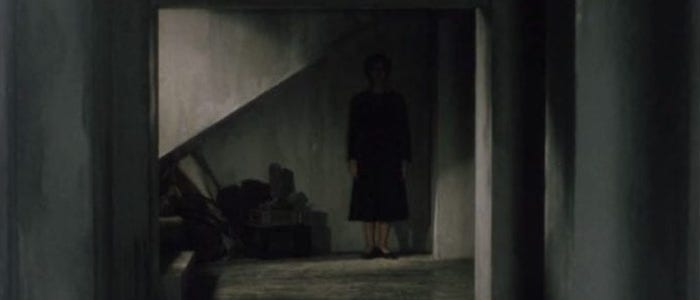20 years after its initial Japanese release, Kiyoshi Kurosawa’s supernatural chiller
Pulse (Kairo) hits closer to home than ever. The similarities between the film’s events and the global pandemic lends a prescient quality to
Pulse that reads differently today. Kurosawa’s unsettling ghost story draws basis from a terrifying concept; a heavily overcrowded afterlife caused the dead to spill over into the world of the living. It spreads like a viral infection, plunging the globe into despair and death through the very thing meant to connect us – technology.
Everything about
Pulse set it apart from the J-horror craze that swept through horror at the turn of the century. Instead of long-haired ghosts in white or jump-scare laden curses, Kurosawa opts for a slow-burn atmosphere that coils the unease tighter at every turn through the power of suggestion. Never is that more evident that the movie’s scariest scene that shows the ghostly invasion in action. Kurosawa transforms the seemingly mundane into pure nightmare fuel with the surreal appearance of a haunted figure.
Related Keywords
Japan , Tokyo , Kairo , Al Qahirah , Egypt , Japanese , Junko Kurume Arisaka , Ryosuke Haruhiko Kato , Taguchi Kenji Mizahashi , Toshio Masatoshi Matsuo , Kiyoshi Kurosawa , , Scariest Scene , Scariest Scene Ever , Kumiko Aso , Haruhiko Kato , Kenji Mizahashi , Kurume Arisaka , Masatoshi Matsuo , Pulse , Movies , Film , Tv , ஜப்பான் , டோக்கியோ , கைரோ , எகிப்து , ஜப்பானிய , துடிப்பு , இழ்ம் , வ் ,
comparemela.com © 2020. All Rights Reserved.
